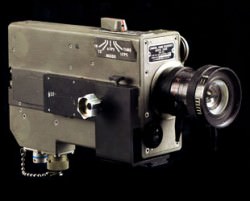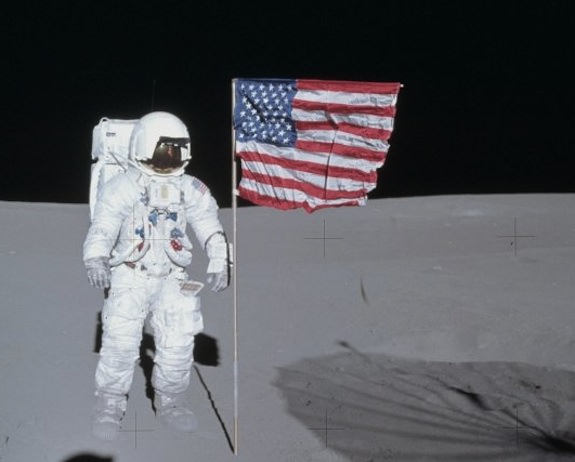[/caption]
Imagine you’re an astronaut. You have what it takes to be selected to fly a mission to the Moon. You train, make the trip, and become one of literally a handful of humans ever to have walked on the lunar surface. And when you leave the desolate beauty of the Moon behind in your Landing Module, and are just about to re-enter the Lunar Orbiter and head for home, you see one of the cameras that you used on the surface. If you leave it where it is it’s going to be lost forever, crashing into the lunar surface with the rest of the lander. If you take it, you’ll be going against standard NASA operating procedure since you hadn’t filled out the proper paperwork beforehand for official mission items appropriated by astronauts. Leave a piece of history behind to be destroyed or salvage it as a souvenir… what do you do?
Apollo 14 astronaut Edgar Mitchell decided to bring the camera back, and now, 40 years later, his decision is going to land him in court.
Last June, the U.S. government brought a case against the 81-year-old moonwalker after he offered the 16-millimeter Data Acquisition Camera (DAC) up for sale at New York’s Bonhams auction house as part of their May “Space History Sale”. While it was common for Apollo astronauts to be able to keep various pieces of equipment and space suits as mementos after their missions, certain paperwork had to be filled out beforehand… it’s just the NASA way.
The late Donald “Deke” Slayton, head of the astronaut corps in 1971, mentioned this during an interview with the Tuscon Daily Citizen in 1972.
“They give me a list of things they’re going to bring back,” Slayton said. “I give it to the program office and they bring ’em back.”

The DAC, it seems, was not on any lists handed in by Mitchell. Yet it was never intended to be on the ride back to Earth, either. Rather its destination was to be in the bottom of a crater made by the landing module when it crashed back onto the Moon.
Must have seemed a rather wasteful end for a historic – and valuable – piece of equipment. Were it to go to auction it could have fetched between $60,000 to $80,000.
“We had an agreement with NASA management, that small items that didn’t exceed our weight limitations, we could bring back.”
– Edgar Mitchell to WPTV
Regardless of its value – sentimental or otherwise – NASA’s lawyer claims that Mitchell was contacted several times about returning the camera but never responded. Mitchell’s attorney, on the other hand, argues that too many years have passed for NASA to now claim the camera as stolen property.
When it was brought before a Florida district court judge to have the case dismissed, however, the judge had no option but to side with the government.
“‘It is well settled that the United States is not bound by state statutes of limitation or subject to the defense of laches in enforcing its rights,'” quoted Judge Daniel Hurley of an appeals court ruling. “Defendant’s allegations that NASA intended the camera to be destroyed after the mission or that it routinely awarded used mission equipment to astronauts do not preclude as a matter of law Plaintiff’s contrary allegation that Defendant impermissibly converted the camera.”
Bottom line: the case goes in front of a jury in October 2012.
Read more about this on collectSPACE.com.

